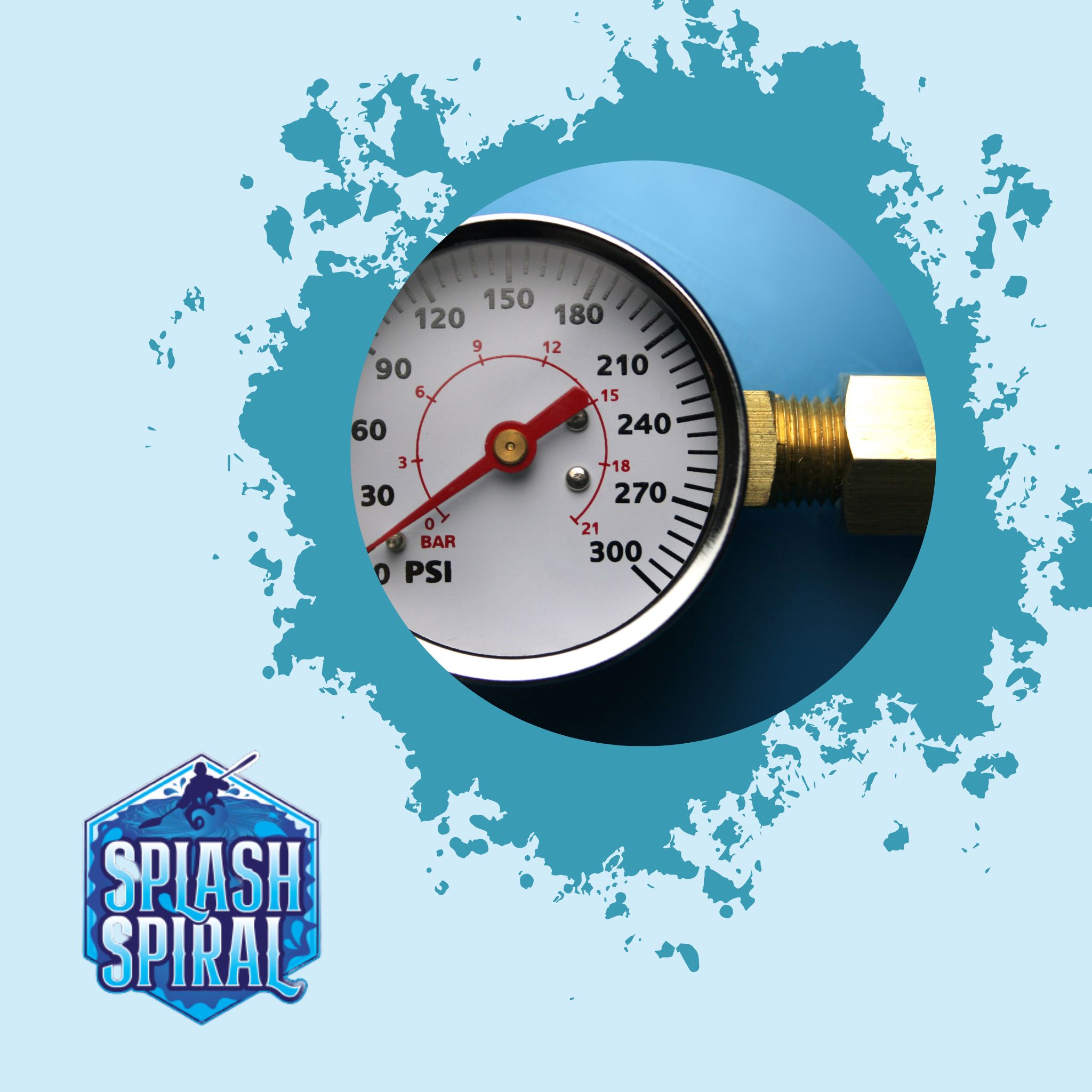
Scuba diving is one of the most exciting and adventurous activities that humans can experience. It requires knowledge, skills, and proper equipment to safely explore the underwater world.
One of the essential pieces of scuba diving equipment is a pressure gauge, also known as a submersible pressure gauge (SPG). In this article, we will discuss in detail what an SPG is, its importance in scuba diving activities, how to read it and maintain it properly.
Definition of SPG
An SPG is a device that measures the pressure of air or gas inside a scuba tank. The gauge displays these measurements through a dial or digital display.
An SPG could be separate from other gauges or may be integrated into other instruments such as dive computers or consoles. The unit of measurement for an SPG reading is typically pounds per square inch (psi) or bar (metric system).
Most divers prefer using psi units because regulators are calibrated for that unit system. However, European diving agencies recommend using bar units.
The Importance of SPG in Scuba Diving
Understanding submersible pressure gauges and how to use them correctly is crucial for safe scuba diving practices. An SPG helps divers monitor their air consumption rate through readings displayed on the gauge during each dive. This information provides valuable data about how much gas remains in their tanks and helps them avoid running out of air while underwater.
An accurate reading on an SPG also allows divers to plan their dive duration better by calculating the remaining time they can spend underwater based on their current air consumption rate per minute. Additionally, it’s essential to note that failing to maintain and read your submersible pressure gauge correctly can lead to dangerous situations while diving.
Overview of What Will Be Covered in the Article
In the following sections, we will discuss what an SPG is in more detail, the different types available on the market, how to choose one that suits your diving needs, reading and interpreting gauge readings correctly. We will also discuss maintaining your SPG to keep it working efficiently and safely. We’ll delve into advanced topics related to using an SPG such as calculating air consumption rate and technical diving considerations when using an advanced gauge system.
What is an SPG?
An SPG, or Submersible Pressure Gauge, is a vital instrument that scuba divers use to monitor the amount of air remaining in their tanks. It’s a small gauge that’s attached to the regulator hose and displays the pressure in either PSI (pounds per square inch) or BAR (bars of pressure). Knowing how much air you have left is important because it allows you to plan your dive accordingly and avoid running out of air underwater.
Definition and Function of an SPG
The SPG functions as a basic pressure gauge that displays the amount of compressed gas within scuba diving cylinders. The gauge measures tank pressure directly from a hose attached to a regulator by providing a readout on an easy-to-read dial or digital display. The gauge must be able to withstand the high pressures found in diving cylinders, which can reach up to 3500 psi (240 bar).
In addition to measuring tank pressure, some models of SPGs also come equipped with other features such as depth gauges and compasses. These multi-functional devices can help divers keep track of their depth, direction, and remaining dive time.
Types of SPGs Available in the Market
There are different types of SPGs available in the market today. Some are analog while others are digital. Analog gauges typically have larger dials for easy reading while digital gauges offer more accuracy when taking measurements.
Another type is the wrist-mounted computer-based gauge which allows for wireless transmission between transmitter attached on tanks and receiver located on wrists giving real-time readings. Some models also come with additional features like temperature sensors, timers, alarms, and even dive logs for recording important data during dives.
How to Choose the Right SPG for Your Diving Needs
When choosing an SPG it’s important to consider your diving needs and level of experience. For beginner divers, an analog gauge with a simple dial is sufficient. More advanced divers might prefer the accuracy of a digital gauge or a multi-functional device that includes other features like depth gauges and compasses.
When choosing an SPG, consider factors such as durability, readability in low light conditions, compatibility with your equipment, and ease of use. It’s also important to choose a gauge that is easy to read and understand as well as one that will last for years to come.
How to Read an SPG
An SPG, or submersible pressure gauge, is a crucial tool for monitoring the amount of air remaining in your scuba tank. Properly reading your SPG can make or break a dive, so it’s important to understand how to read it accurately. Here are some key things to keep in mind when reading an SPG:
Understanding the Different Units of Measurement Used on an SPG
SPGs can display pressure readings in various units of measurement, including PSI (pounds per square inch), BAR (bars), and ATA (atmospheres absolute). It’s essential to know which unit your particular gauge uses and be familiar with its equivalent value in other units.
For example, one BAR converts to approximately 14.5 PSI. Understanding these equivalents will help you quickly interpret readings from unfamiliar gauges.
Interpreting the Readings on an SPG
An atmospheric pressure gauge typically indicates the remaining air pressure within a cylinder or tank while providing a reference point for potential hazards and limits that divers must adhere to during their dive. To interpret an SPG’s readings correctly, start by looking at the needle position against its corresponding scale unit. For instance, if you have a 5000 psi tank with a rated volume of 80 cubic feet of gas and assuming average depth ranges between twenty-five and thirty meters deep, then you would want your needle positioned around 3000 psi at those depths since this represents half of the available air supply.
Common Errors When Reading an SPG and How to Avoid Them
One common mistake divers make when reading their submersible pressure gauge is failing to note any changes over time – this could lead them into running out of air before completing their dives safely. Other errors include failing to calibrate their gauges properly or neglecting to account for temperature changes that can affect tank pressure.
To avoid these mistakes, take the time to learn how your specific gauge works, and always double-check your readings before and during a dive. Correctly reading an SPG can be a lifesaver, so ensure you master this skill before attempting any more advanced dives.
Maintaining Your SPG
Proper cleaning and storage techniques for your SPG
Proper maintenance of your scuba diving equipment is essential to ensure it functions properly and lasts a long time. Your SPG is no exception.
Regular cleaning and proper storage will help keep your gauge in good condition and working order. First, it’s best to rinse the gauge with fresh water after each dive.
Use a soft brush or cloth to remove any dirt, sand, or salt deposits that may have accumulated on the gauge. Be careful not to get water into the internal parts of the gauge as this can damage it.
After rinsing, dry the gauge thoroughly with a clean towel before storing it in a dry, cool place away from direct sunlight. Avoid storing your SPG with other dive gear as this can cause scratches or damage to the gauge face or body.
When to replace your SPG and how to dispose of it safely
Even with proper maintenance, your SPG will eventually need to be replaced. Common signs that indicate that your gauge needs replacement are cracks on the body or face of the instrument, inaccurate readings, or difficulty in reading the dial itself.
When disposing of an old SPG unit you should check local regulations for hazardous waste disposal because some gauges may contain toxic materials such as lead-based paint on dials. To reduce waste when replacing these gauges look for brands that offer trade-in programs where old gauges can be returned for discounts on new ones.
Troubleshooting common issues with your SPG
Sometimes problems may arise while using an SPG during a dive even if you maintained it properly beforehand. Here are some tips for troubleshooting common issues:
– If there is no pressure reading: Check whether there is enough air in your tank first! If so then check if there might be a problem with the connection between the tank valve and the regulator.
– If there is a decrease in pressure reading: Check that the hose is properly connected to both the gauge and regulator, ensure there are no air leaks, and lastly check for damage to the gauge’s internal mechanism. – If there is an inaccurate reading: Look for any damage or dirt on your gauge face.
You can also try to reconnect your SPG with another second stage regulator if you have a spare one. By doing this you’ll know if it’s an issue with the SPG itself or rather something wrong with your regulator.
Advanced Topics Related to Using an SPG
Calculating air consumption rate using an SPG
One of the most important skills a diver can master is maintaining proper buoyancy and air consumption rate. With an SPG, divers can monitor their air supply and calculate their consumption rate to better understand how much time they have remaining underwater.
To calculate your air consumption rate using an SPG, you must first start with a full tank of air and record the starting pressure. Then, after a dive, record the ending pressure and total dive time.
By subtracting the ending pressure from the starting pressure, you can determine how much air you used during the dive. Divide this number by your total dive time to get your average air consumption rate.
It’s important to note that this calculation only provides an estimated average and may vary depending on factors such as depth, exertion level, equipment configuration, and breathing patterns. However, tracking your average air consumption rate over several dives can help you establish a baseline for what’s typical for you and allow you to adjust your diving habits accordingly.
Using multiple tanks with one or more gauges
For advanced divers who use multiple tanks on a single dive, using one or more gauges is essential for monitoring gas supply levels in each tank. Some divers prefer using separate gauges for each tank while others opt for a single gauge that displays information from all tanks simultaneously. Whichever method is chosen, it’s important to understand how to read and interpret readings from each gauge properly.
When using multiple tanks with one or more gauges, it’s also crucial to properly label each tank with identifiers such as color-coded bands or stickers indicating gas type and pressure range. This helps prevent confusion during diving operations and ensures that divers always know which tank they are accessing when changing regulators or switching between tanks.
Technical diving considerations when using an advanced gauge system
For technical divers who engage in deeper and more complex dives, using an advanced gauge system is a necessary component of their equipment. These gauges often include features such as multiple sensors for monitoring gas mixtures, depth gauges, and temperature sensors. However, using these advanced systems requires proper training and certification to ensure safe and effective use.
Technical divers must also adhere to strict decompression schedules, which typically require monitoring of multiple gas supplies throughout the dive. This makes proper use of an SPG even more critical for technical divers as they must constantly monitor their gas levels to ensure they have enough supply for decompression stops or in the event of an emergency.
Conclusion
After reading this article, it should be clear that the submersible pressure gauge (SPG) is an essential piece of diving equipment that every diver must have in their kit. It is important to understand the different types of SPGs available and how to choose the right one for your specific needs. Additionally, knowing how to properly read and maintain your SPG can ensure a safe and enjoyable diving experience.
Summary of Key Takeaways from the Article
Firstly, it is important to understand what an SPG is and its function in scuba diving. Knowing how to read an SPG accurately and how to maintain it properly will help you avoid common errors and issues while diving. You should also keep in mind that there are advanced topics related to using an SPG which can come in handy when faced with technical diving situations.
Final Thoughts on Why Understanding and Properly Using Your Dive Gauge Can Matter
Many scuba diving accidents occur due to lack of preparation or improper use of equipment. By understanding what an SPG is, knowing how to read it accurately, maintaining it properly, and taking advantage of advanced features where necessary; you can help prevent accidents from happening while enjoying your dive experience with confidence. Remember that being a responsible diver includes taking good care of your equipment as well as yourself.
Investing time into learning about SPGs can make all the difference between having a memorable dive or experiencing a potentially dangerous situation underwater. With the right knowledge under your belt, you’ll be able to make informed decisions when selecting or maintaining your dive gear – ultimately leading you towards achieving safer, happier dives.







